Kerala Style Avial is a thick, semi-dry mixed vegetable curry with coconut and curd. It is an important sadhya dish, served in temple feasts, Onam/Vishu celebrations, and everyday Kerala meals.
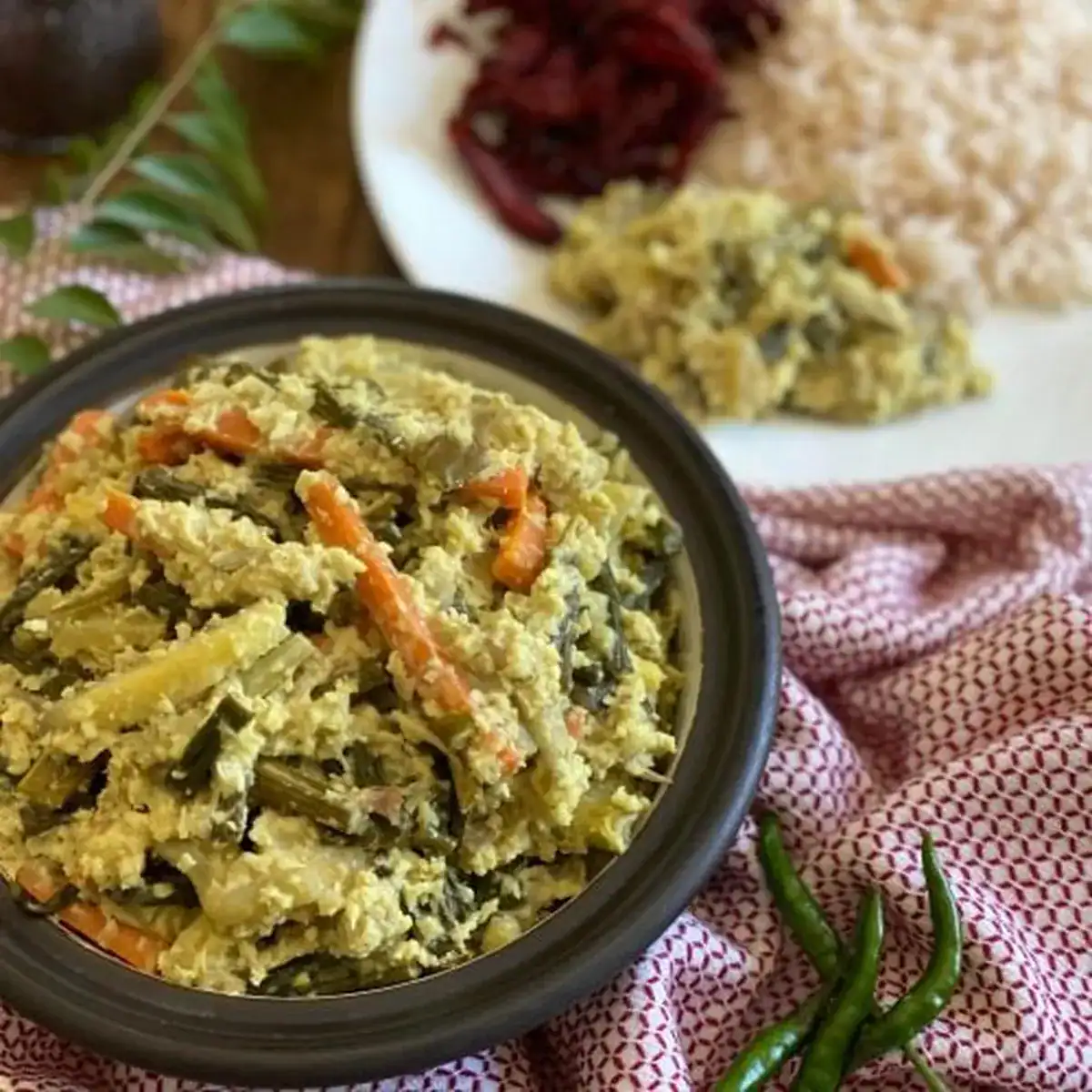
There are many histories behind the dish. One of them is that Bhima from the Mahabharata created it by mixing leftover vegetables with coconut. Tamil Nadu and Udupi have their own variations, each with a unique taste.
Here, we show you how to make Kerala-style at home with exact ingredients, a simple method, useful tips, swaps, storage instructions, and serving ideas.
Jump to:
- What is Avial?
- Why You'll Love This Recipe?
- Recipe Ingredients
- Variations to Try
- How To Make Avial?(Step-by-Step Guide)
- Tips And Tricks
- Serving Suggestions
- Storage Instructions
- Frequently Asked Questions (FAQ)
- More Kerala Onam/Vishu Sadhya Recipes to Try
- Avial (Kerala Style Mixed Vegetable Curry with Spiced Coconut)
What is Avial?
Avial is a traditional Kerala-style mixed vegetable curry made with drumstick, raw banana, yam, beans, carrot, and ash gourd, all cooked until tender. Then they are coated in a coconut, shallot, green chilli, and cumin mix, and finished with yogurt and coconut oil.
Avial can also include vegetables like pumpkin, snake gourd, cucumber, brinjal, potato, zucchini, or ivy gourd. These add more colour, texture, and variety. Choose based on season and availability.
Avoid watery or strongly flavoured vegetables like cabbage, cauliflower, and capsicum, as they can dilute the coconut-yogurt base. Skip beetroot to prevent colour bleeding. Leave out bitter gourd, radish, and turnip to avoid overpowering bitterness.
Okra can turn slimy, and tomatoes, onions, or garlic are not part of the traditional Avial flavour profile.
Some regions in Kerala add turmeric powder, giving the dish a warm yellow hue. Others skip it, keeping the colour pale white to highlight the vegetables.
The aroma starts with fresh coconut oil, followed by the earthy coconut paste and mild tang of yogurt. On the palate, tender vegetables carry a creamy coconut coating with gentle sourness, all tied together by the richness of coconut oil.
Kerala Avial shares roots with variations in neighbouring states:
- Tamil Nadu Aviyal – Can be semi-dry or gravy-style, with coarsely or finely ground coconut paste. Sometimes tempered with mustard seeds, it is spicier and more tangy than the Kerala version.
- Udupi Avial – A thick curry made with a smooth coconut paste, always tempered with mustard seeds, urad dal, and red chillies, giving a tangy flavour and the distinct aroma of tempered spices.
In a Kerala Sadhya, Kerala Style Sambar is the main curry poured over rice, while Avial is one of must-have sides, adding colour, texture, and a mild coconut flavour alongside other traditional side dishes.
Why You'll Love This Recipe?
Kerala Style Avial stands out for its perfect balance of nutrition, taste, and tradition. It’s naturally gluten-free, wholesome, and comforting. It completes a Sadhya and comes together quickly, making it ideal for both festive spreads and everyday meals.
If you’re planning a full sadya spread, explore God’s Own Feast – Kerala Sadhya Guide for more side dishes to pair with this avial.
Recipe Ingredients
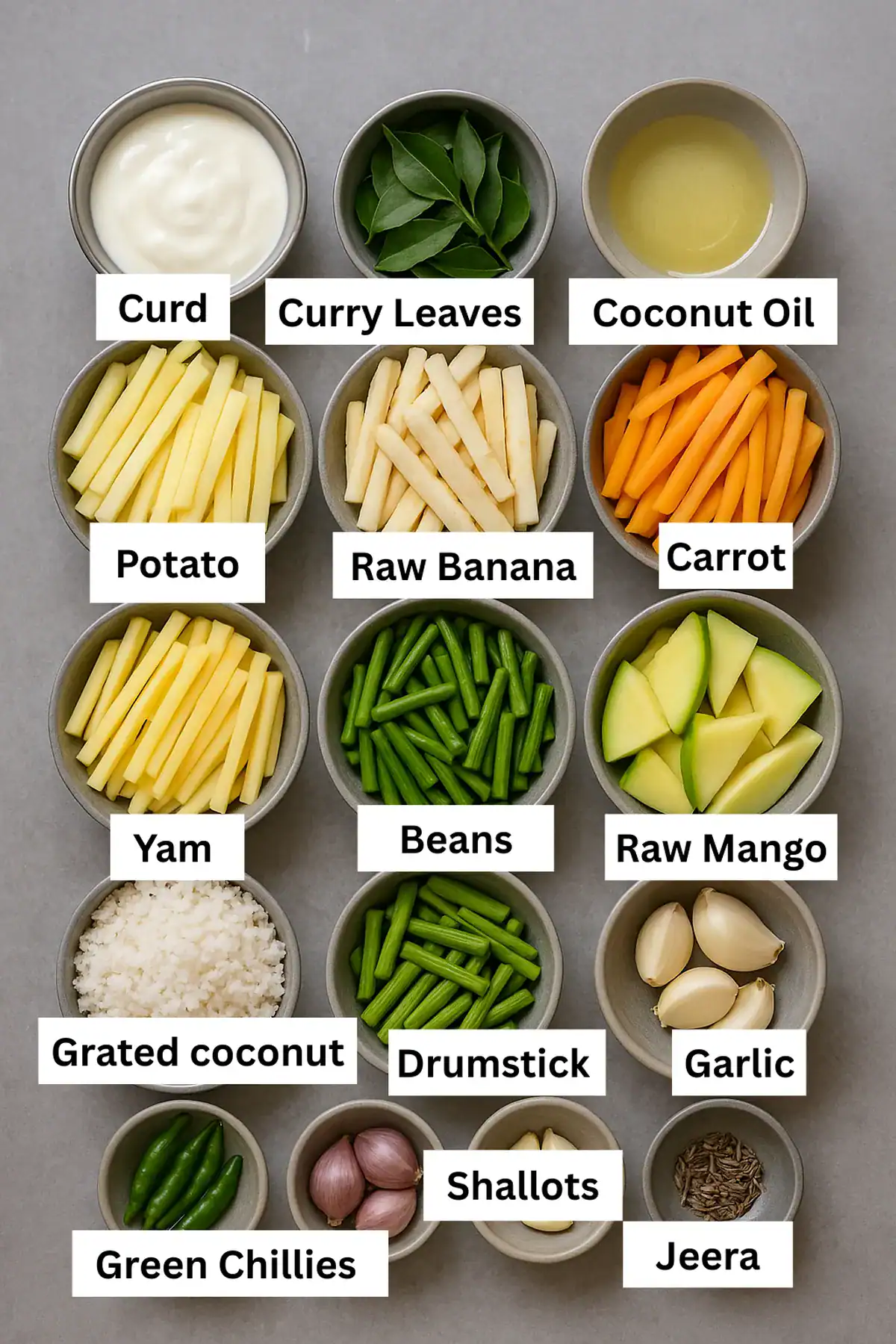
- Vegetables
Potato, raw banana, yam, carrot, drumstick, beans, zucchini, and raw mango form the base of Avial. Cooked until tender, they bring a mix of colours, textures, and natural sweetness, with raw mango adding a light tang. - Coconut Mix
Grated coconut, green chillies, shallots, garlic, and cumin are ground to a coarse paste. This mixture forms the core flavour and creamy body of Avial. - Other Ingredients
Curd adds the gentle tang that balances the coconut mix. Curry leaves give the dish its signature Kerala aroma, and coconut oil is the essential final touch for an authentic finish.
You’ll find exact quantities and step-by-step instructions in the recipe card below. For another important Sadhya side, try our Pineapple Pachadi, which has a coconut mix similar to Avial but with mustard seeds ground in.
Variations to Try
- Vegan Version – Skip yogurt and use raw mango or tamarind pulp for tang.
- Regional Styles – Tamil Nadu and Udupi styles of Avial are also popular in South India.
- Extra Ingredients – Vegetables like cluster beans, cucumber, or brinjal can be added. Some homes include onions or garlic, though these are not used in festival Avial.
- Spice Adjustments – Adjust the number of green chillies to suit your heat preference.
- Colour Choice – Turmeric is optional. Without it, Avial stays white or ivory; with it, it turns a warm yellow.
For another mild, coconut-based dish that balances the Sadhya plate, try our Vendakka Kichadi.
How To Make Avial?(Step-by-Step Guide)
Preparation: Peel/Remove the skin of the vegetables: potato, carrot, yam, and raw mango. Scrape the raw banana skin a bit. Same with drumsticks. You don't have to remove the whole skin of the banana and drumsticks. Wash and clean the vegetables and slice them thin and 2-inch-long pieces.
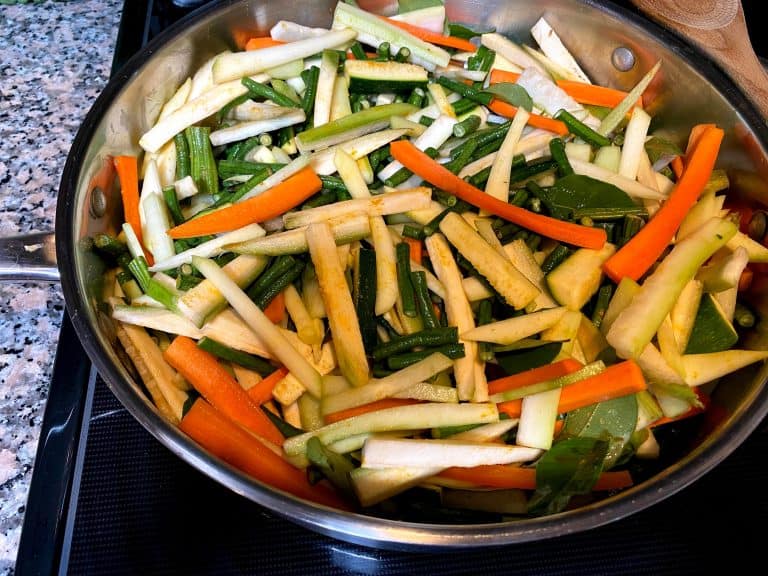
STEP 1: In a pan, add the vegetables along with salt and turmeric powder. Sprinkle 3-4 tablespoons of water. Cover the pan and cook it over medium flame until the vegetables are just cooked.
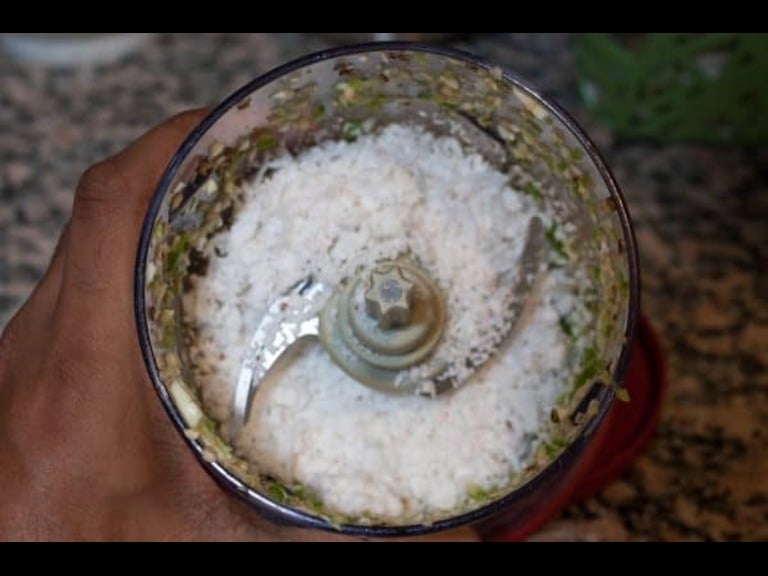
STEP 2: Have ingredients listed under the coconut mix - grated coconut, shallots, green chilli, garlic, jeera and salt in a chopper/mixer. Just pulse it so that it gets crushed. Don't grind it into a smooth paste. It's supposed to have a coarse texture.
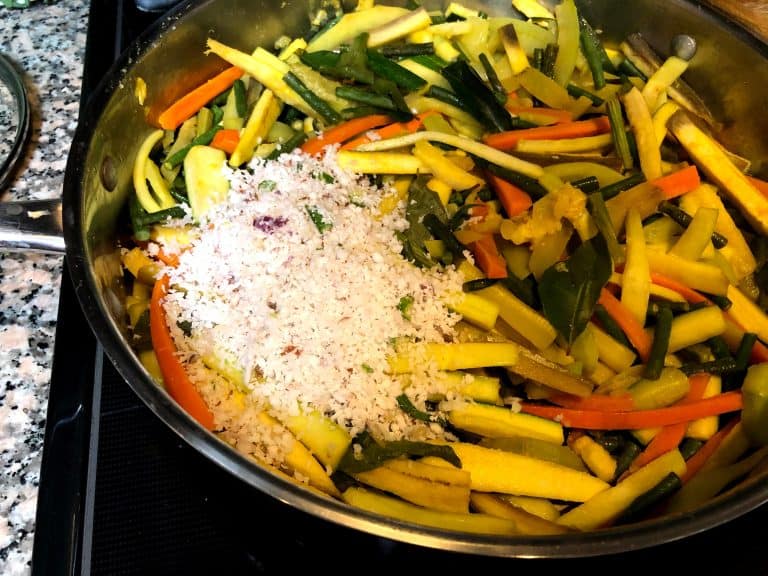
STEP 3: Add the coconut mix to the cooked vegetables and mix well. Cook it for around 5- 10 minutes until it boils and have a thick consistency.
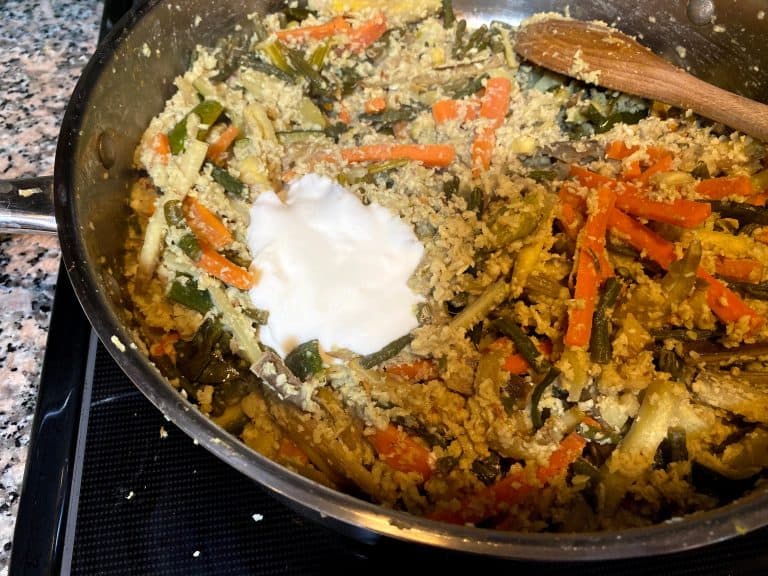
STEP 4: Add yogurt and mix well. Adjust salt. Switch off the flame and remove the pan. Add 1 tablespoon coconut oil and mix well. It gives a special taste! Enjoy with rice
For your next sadya side dish, try a simple thoran like our Cabbage Thoran or Beans Thoran. Both pair well with rice and avial.
Tips And Tricks
- Cutting Vegetables – Cut all vegetables lengthwise for a uniform look. Slice slow-cooking ones like yam, potato, and raw banana thinner so they cook evenly with faster-cooking vegetables.
- Make-Ahead Prep – Vegetables can be cut a day in advance and stored in the fridge. For bulk prep, freeze them, but thaw fully before use to prevent excess water.
- Coconut Mix – Keep the coconut mix coarse, not smooth. Grind grated coconut, green chillies, and cumin seeds just enough to combine.
- Cooking Vegetables – Do not overcook; they should be tender yet firm. While boiling, you can add a little coconut oil and curry leaves for extra flavour.
Once you’ve mastered these prep and cooking tips, put them to use in other Sadhya classics like our Achinga Payar Mezhukkupuratti (Long Beans Stir Fry) or Beans Mezhukkupuratti .
Serving Suggestions
Kerala Style Avial is a must-have side in a Kerala Sadhya, served on a banana leaf alongside rice, sambar, thoran, olan, pachadi, erissery, and other traditional dishes. For a homely Kerala meal, serve it with plain rice and a simple dal or rasam.
It tastes best at room temperature, allowing the flavours of coconut, yogurt, and vegetables to settle. Drizzle a little fresh coconut oil on top just before serving for an extra burst of aroma.
No Sadhya is complete without ending on a sweet note. Finish the feast with our Palada Payasam.
Storage Instructions
Avial stays fresh for 2 to 3 days when stored in a clean, dry, airtight container in the fridge. Let it cool completely before refrigerating to prevent moisture buildup.
Reheating is not ideal due to the yogurt content, so serve at room temperature whenever possible. If you need to warm it slightly, add a splash of hot water or coconut oil to loosen the texture and heat gently.
Freezing is not recommended, as the curd and coconut will separate after thawing.
To balance the richness of Avial in a Sadhya, Moru Curry is added as a light and tangy buttermilk curry.
Frequently Asked Questions (FAQ)
Use less water and cook on low heat so the vegetables steam in their own juices. Limit high-water vegetables and add enough coarsely ground coconut for a thick, creamy texture.
Avoid watery vegetables like cabbage, cauliflower, and capsicum as they dilute the flavour. Skip beetroot, which bleeds colour, and bitter gourd, radish, and turnip for their strong taste. Do not use okra, which turns slimy, or tomatoes, onions, and garlic, as they are not part of the traditional flavour.
More Kerala Onam/Vishu Sadhya Recipes to Try
I’d love to hear your thoughts if you have tried this! Please leave a ⭐️ rating and a comment below. Don’t forget to share your photos on Instagram and tag @a_little_bit_of_spice.
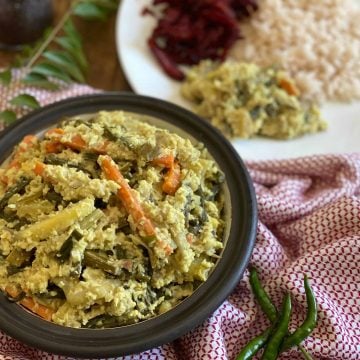
Avial (Kerala Style Mixed Vegetable Curry with Spiced Coconut)
Ingredients
- 1 number potato (medium size)
- 1 numer raw banana (small size)
- 100 gram yam
- 1 number carrot (medium size)
- 1 number drumstick
- 12 number beans
- ½ number zucchini
- ½ number raw mango
- ½ cup curd
- 1 sprig curry leaves
- coconut oil
- salt
Coconut Mix
- 2 cup grated coconut
- 4 number green chilli
- 3 number shallot
- 3 number garlic
- ½ teaspoon jeera
Instructions
Preparation
- Peel/Remove the skin of the vegetables: potato, carrot, yam, and raw mango. Scrape the raw banana skin a bit. Same with drumsticks. You don't have to remove the whole skin of the banana and drumsticks. Wash and clean the vegetables and slice them into thin and 2-inch-long pieces.
Cook vegetables
- In a pan, add the vegetables along with salt and turmeric powder. Sprinkle 3-4 tablespoon water. Cover the pan and cook it over medium flame until vegetables are just cooked.
- Have ingredients listed under the coconut mix - grated coconut, shallots, green chilli, garlic, jeera and salt in a chopper/mixer. Just pulse it so that it gets crushed. Don't grind it into a smooth paste. It's supposed to have a coarse texture.
- Add the coconut mix to the cooked vegetables and mix well. Cook it for around 5- 10 minutes until it boils and have a thick consistency.
- Add yogurt and mix well. Adjust salt. Switch off the flame and remove the pan. Add 1 tablespoon coconut oil and mix well. It gives a special taste! Enjoy with rice.
Notes
- Cutting Vegetables – Cut all vegetables lengthwise for a uniform look. Slice slow-cooking ones like yam, potato, and raw banana thinner so they cook evenly with faster-cooking vegetables.
- Make-Ahead Prep – Vegetables can be cut a day in advance and stored in the fridge. For bulk prep, freeze them, but thaw fully before use to prevent excess water.
- Coconut Mix – Keep the coconut mix coarse, not smooth. Grind grated coconut, green chillies, and cumin seeds just enough to combine.
- Cooking Vegetables – Do not overcook; they should be tender yet firm. While boiling, you can add a little coconut oil and curry leaves for extra flavour.
Nutrition
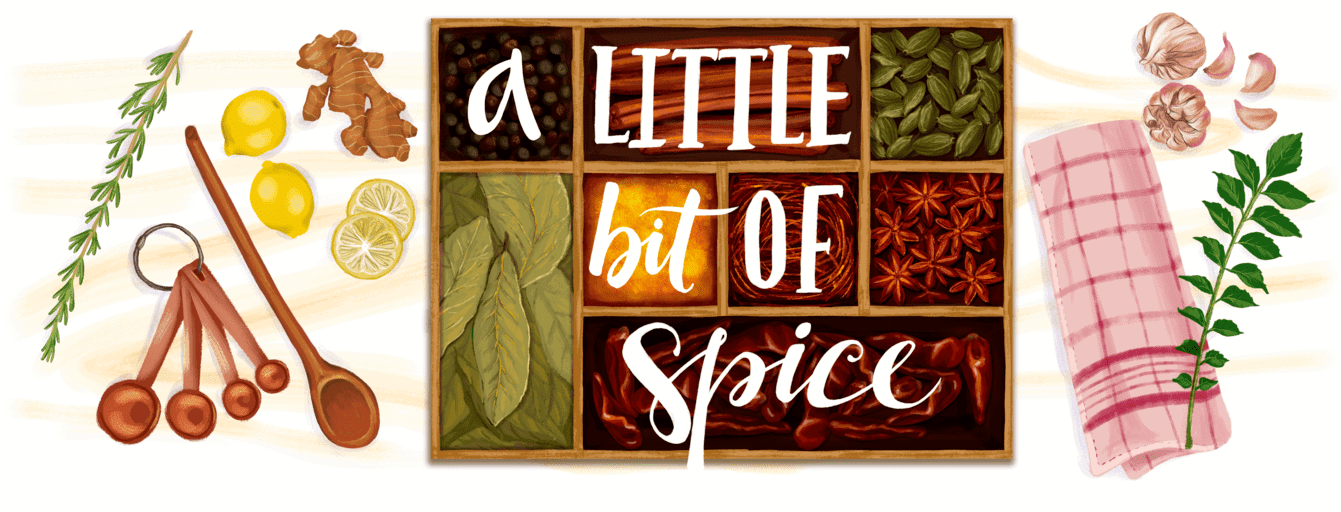

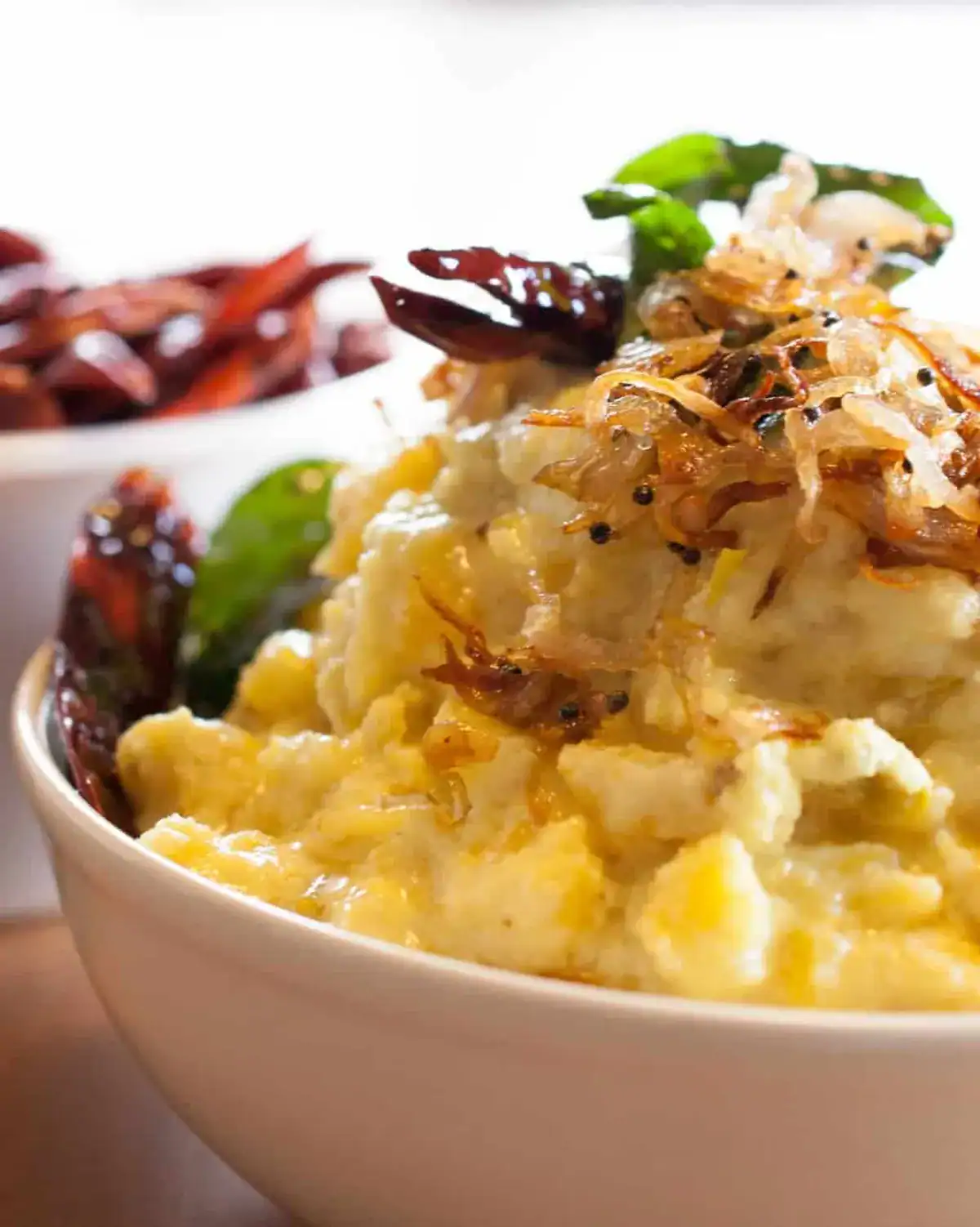
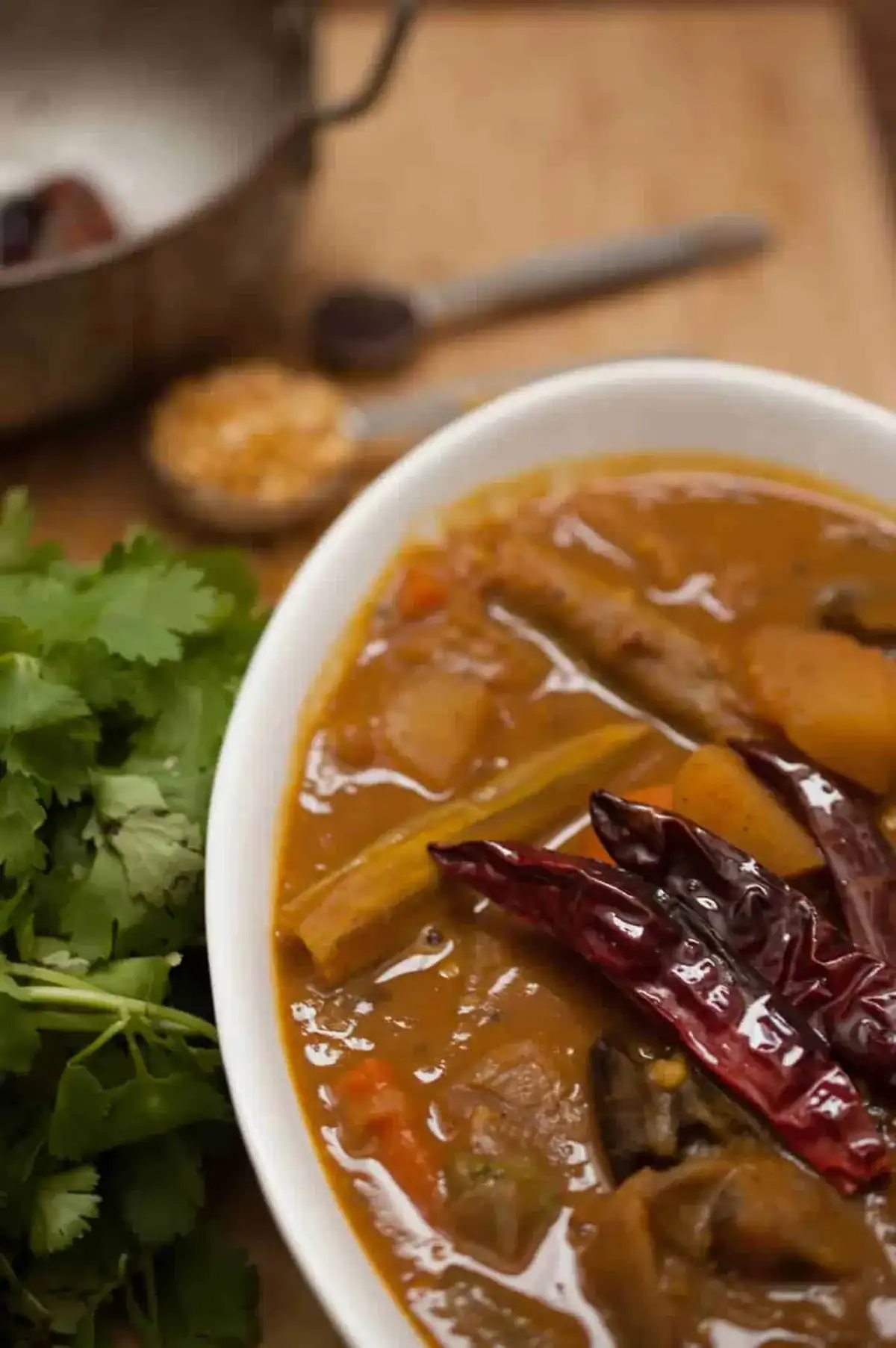
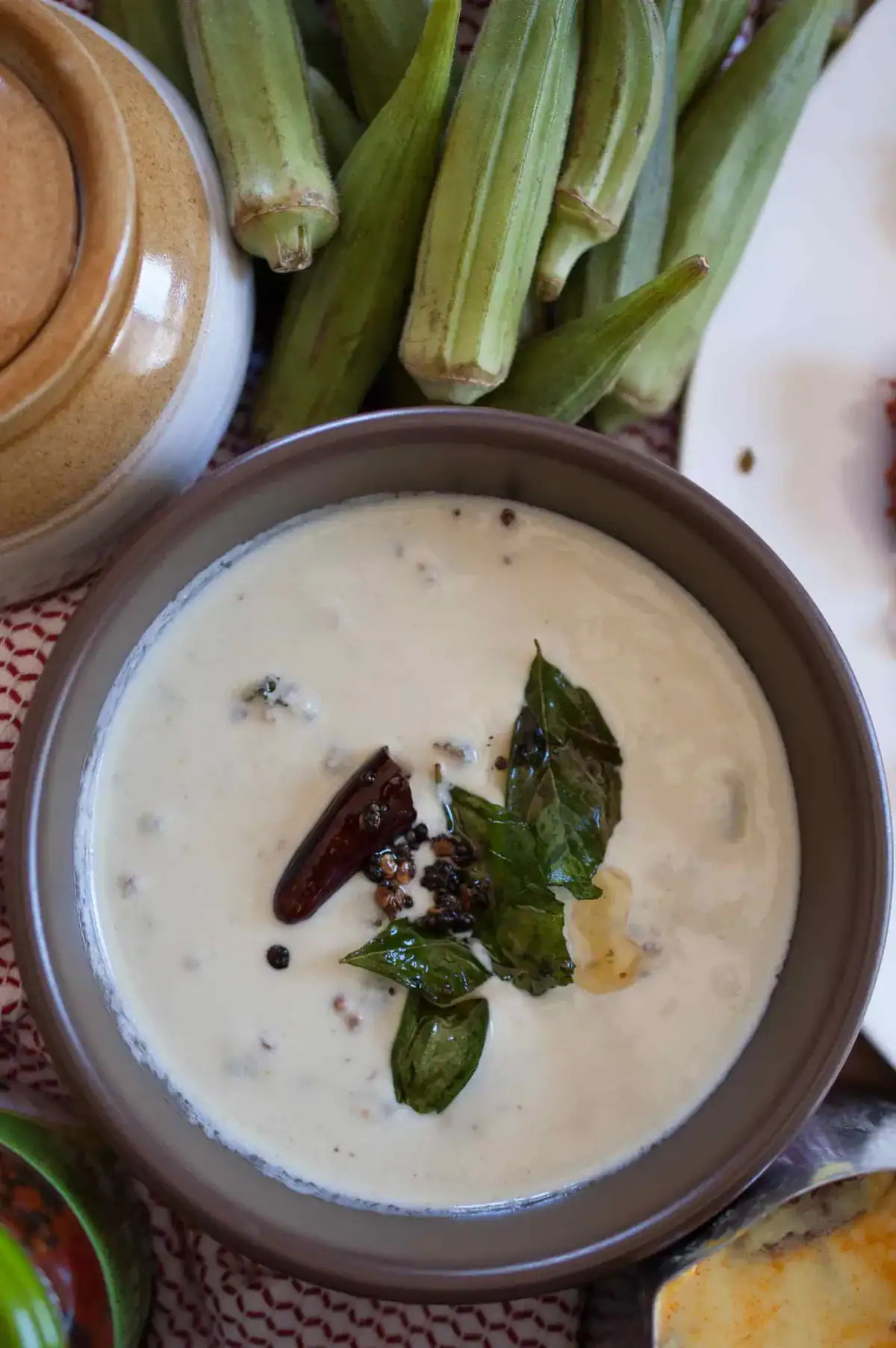
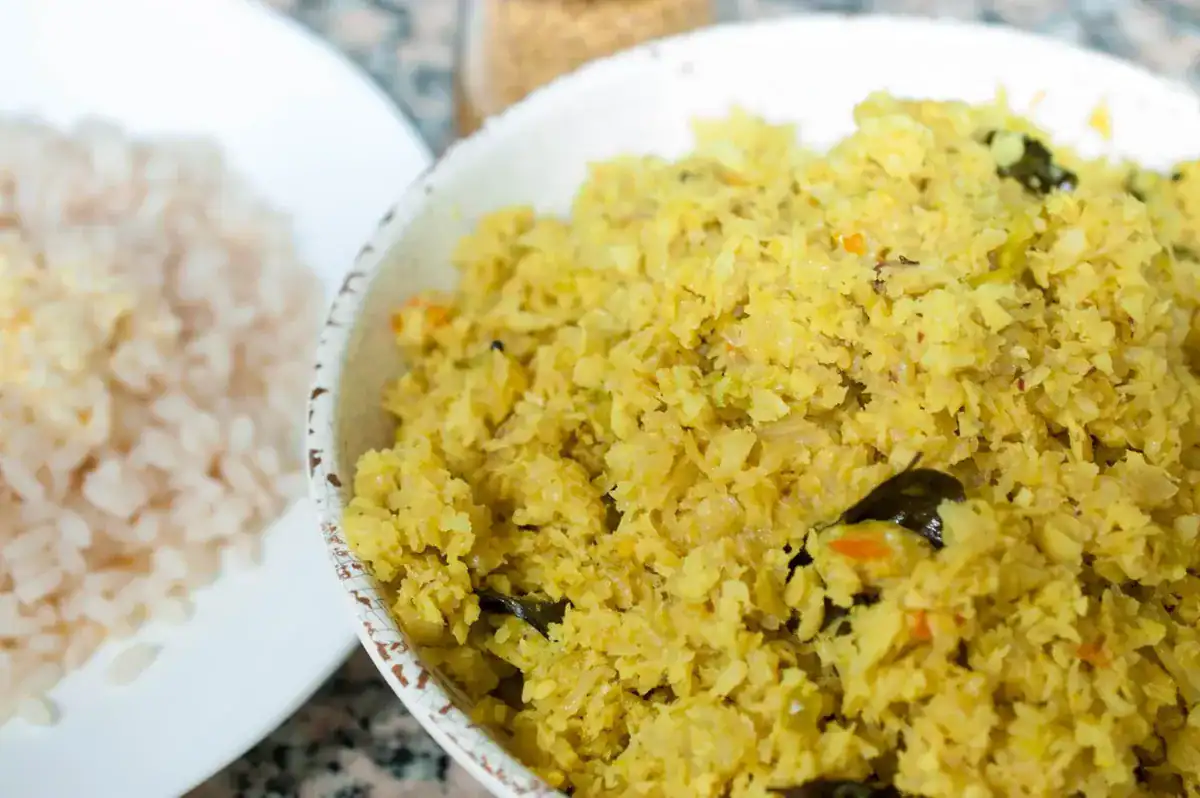
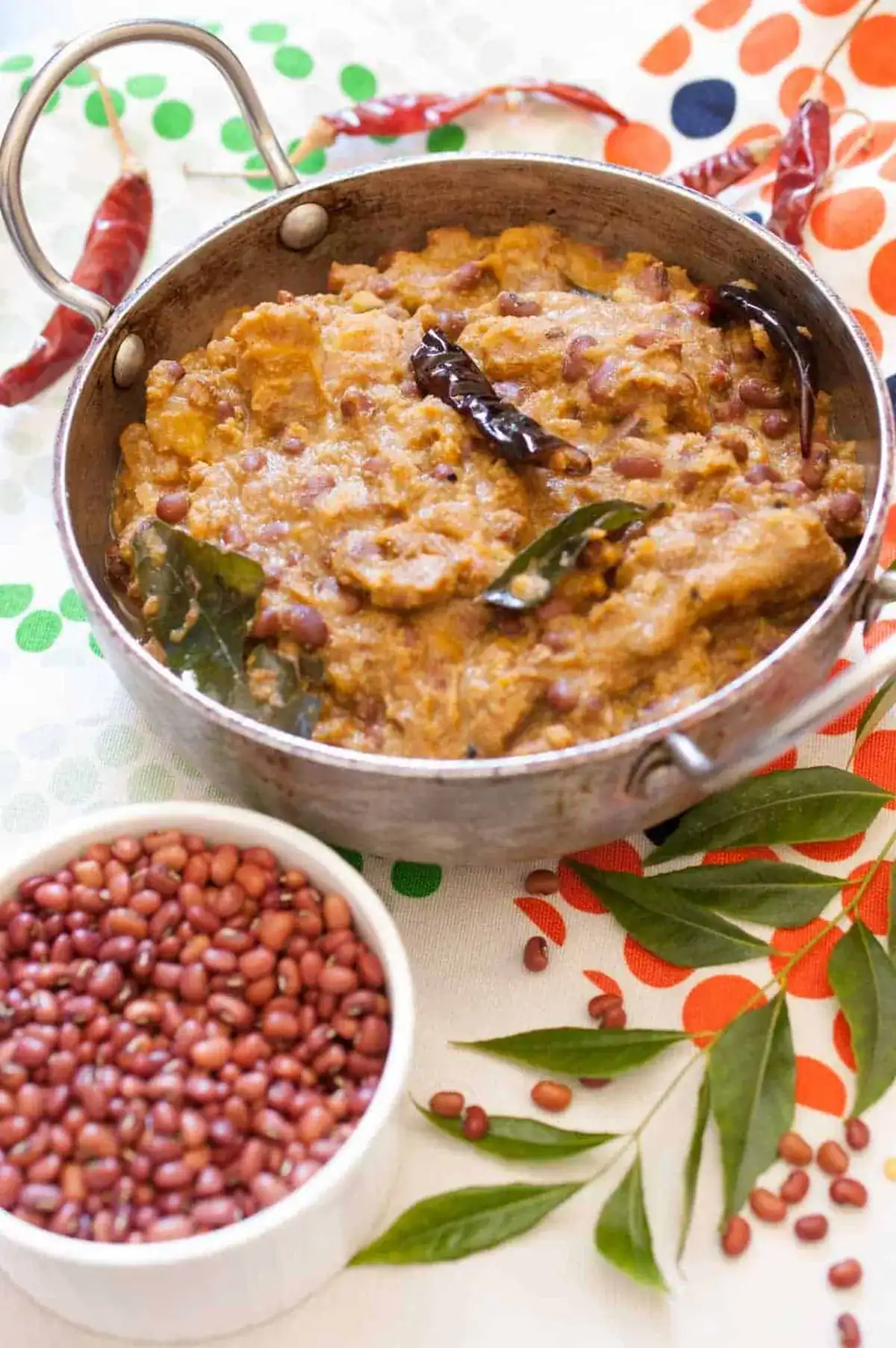
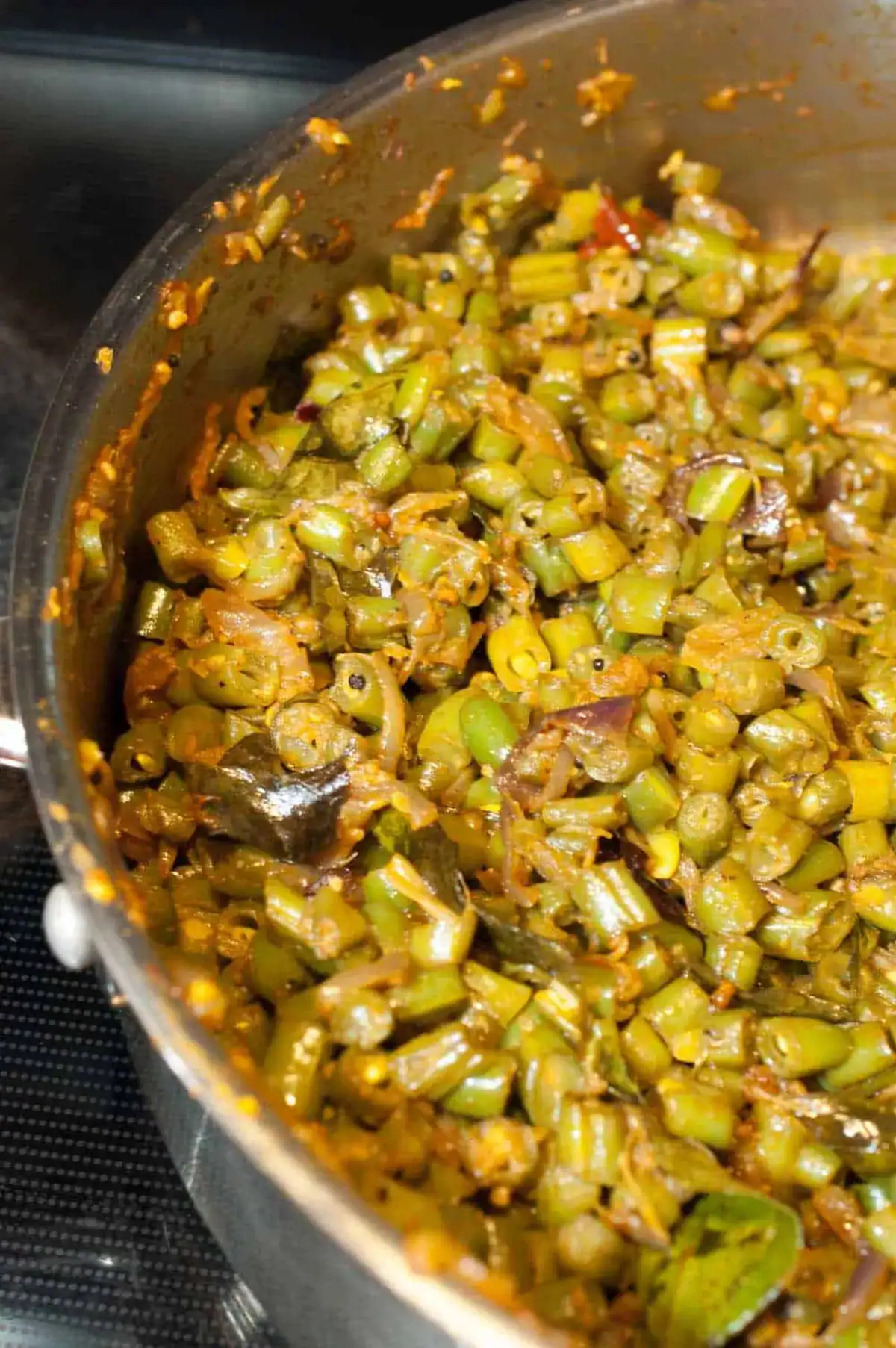
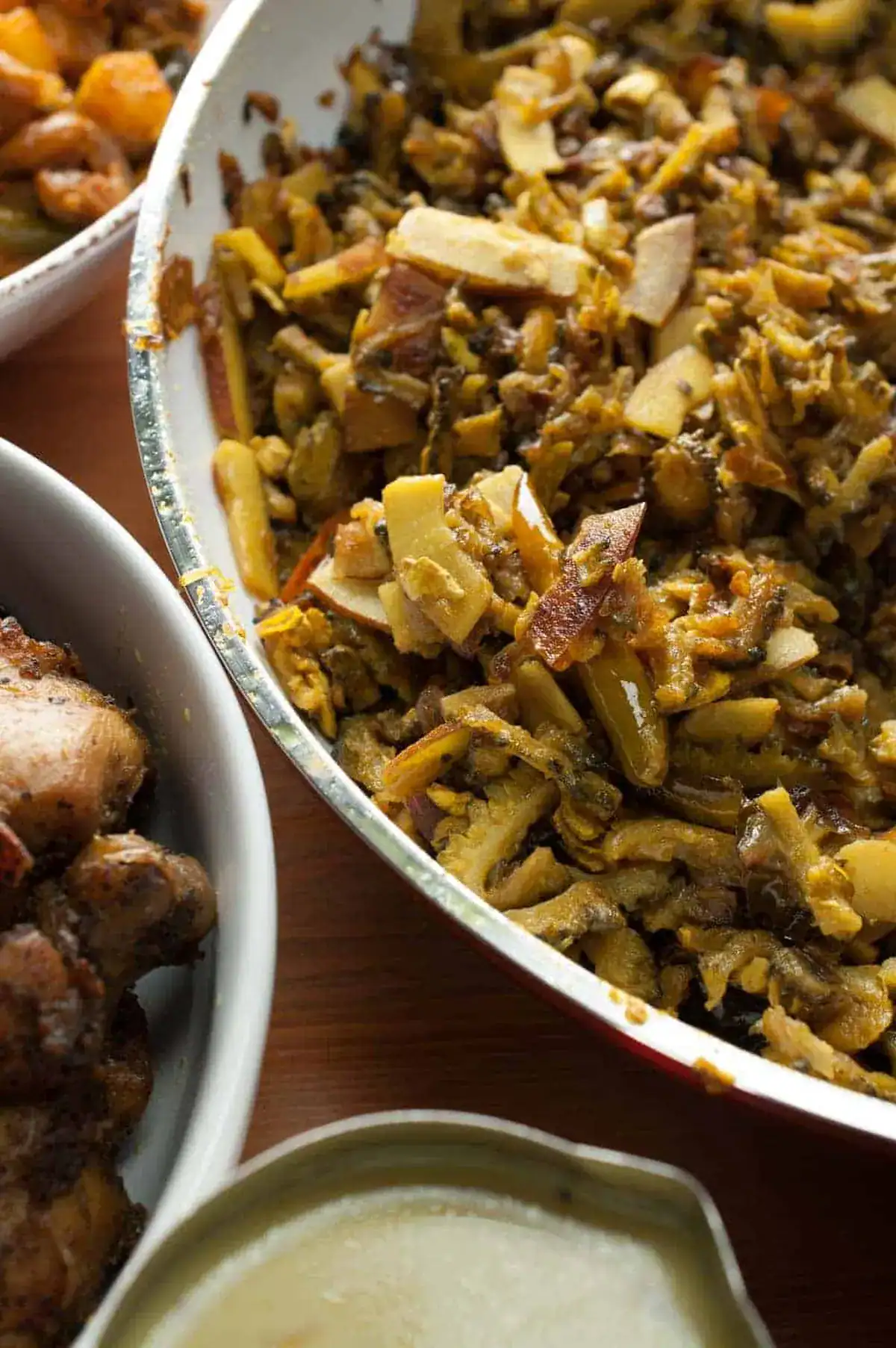
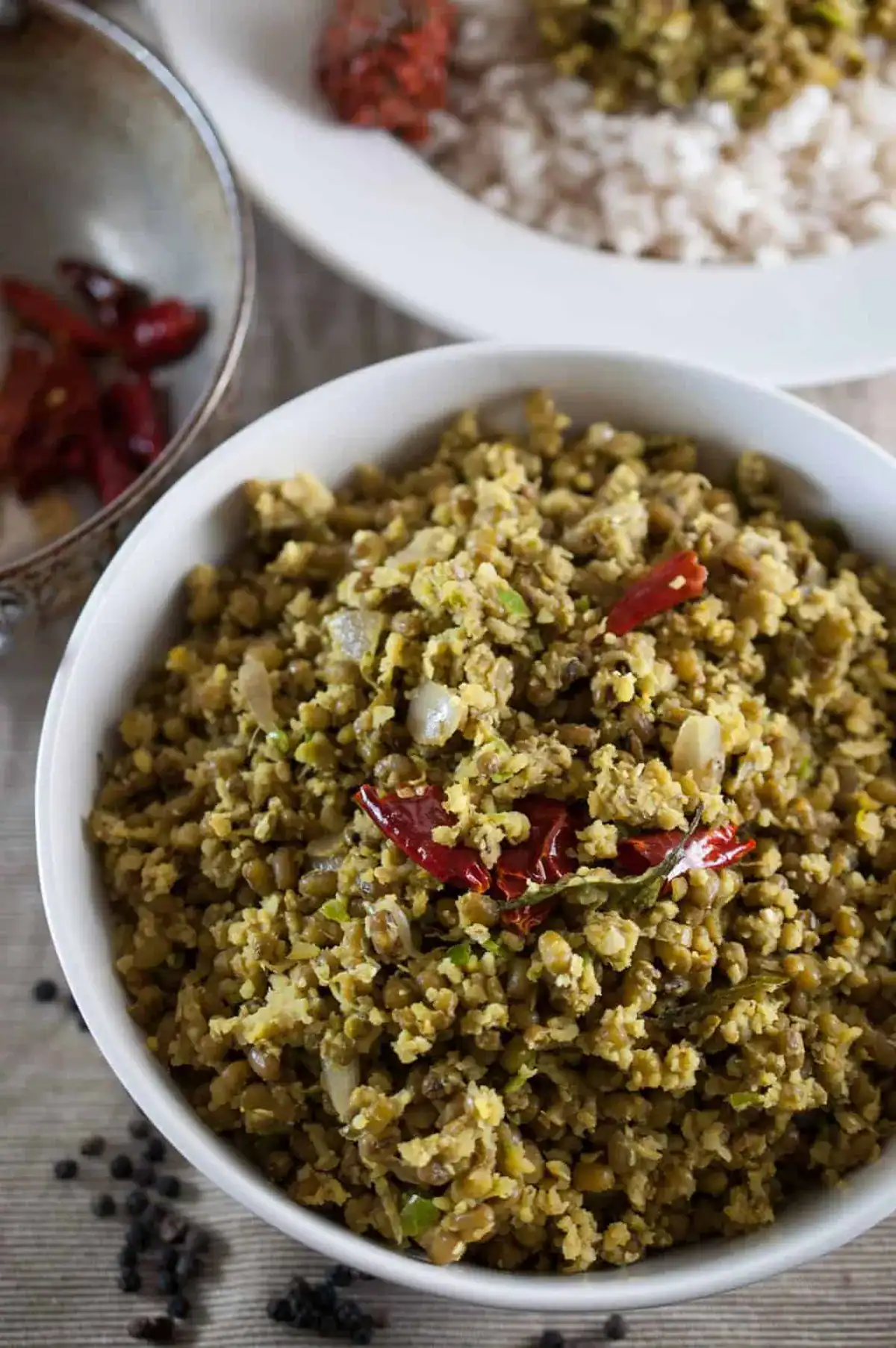
Start the discussion at comments.alittlebitofspice.com